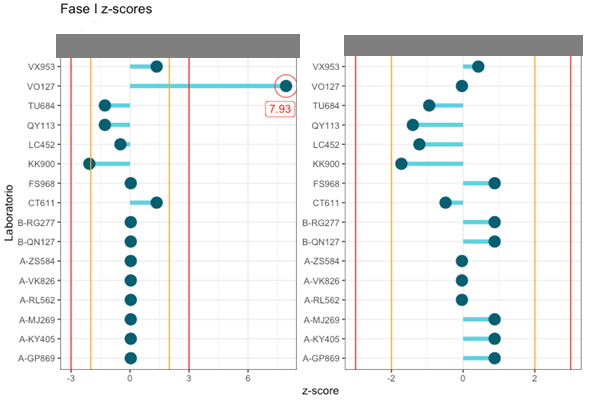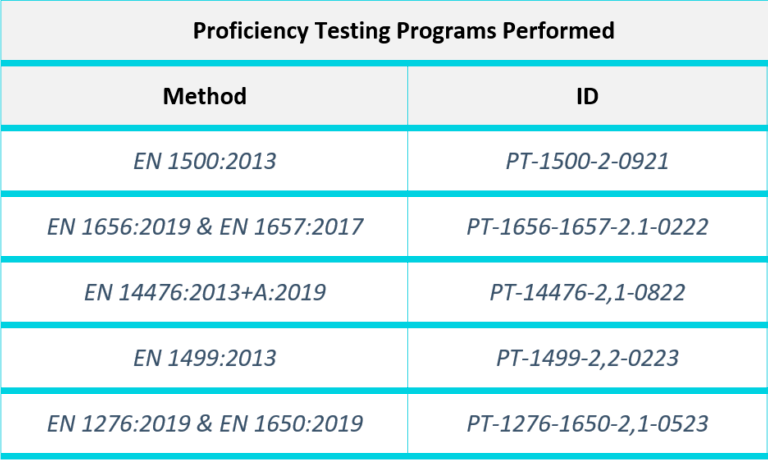When you participate in our competence evaluation programs, it’s essential to understand that we utilize the z-score index for assessment.
We follow Algorithm A for the assigned values, as described in Appendix C of ISO 13528 standard, as part of our quality system based on ISO/IEC 17043.
- z-score > 3 = UNACCEPTABLE OUTCOME
- 2 ≤ z-score ≤ 3 = OUTCOME WITH ALERT
- 0 ≤ z-score < 2 = ACCEPTABLE OUTCOME
Below, we present graphically how we display the results of our programs:

Values falling between the orange and red bands indicate z-scores between 2 and 3, representing an ALERT for the participating laboratory.
Values exceeding the red band indicate z-scores surpassing 3, rendering the obtained value UNACCEPTABLE.
Z-score Performance: Identifying Anomalies
In SHAPYPRO, we provide comprehensive support during the CAUSE ANALYSIS, in accordance with the requirements of ISO/IEC 17025, which involves conducting and documenting a thorough analysis of CAUSES, CONSEQUENCES, and SCOPE.
Cause analysis is critical to understanding underlying issues. Often, the root cause may not be immediately evident, requiring a meticulous approach considering all possible contributing factors, from test requirements to processes, computer systems, methods and procedures, staff skills and training, equipment, consumables, etc.
Therefore, we provide some key RECOMMENDATIONS for conducting a thorough cause analysis:
- Form a Multidisciplinary Team: It’s essential to assemble a team with diverse expertise that can address all relevant aspects of the problem.
- Identify Root Causes: Through a series of reflective questions such as “What happened?”, “What’s the impact on our processes?”, and “Which areas are affected?”, underlying causes of the problem can be identified.
- If a proper cause analysis is conducted, we can establish effective corrective measures that help maintain control over our processes and services, thereby demonstrating our technical competence in future accreditation audits.
Classifying Deviations in a Competence Exercise
Each cause analysis should be documented in a detailed report authored by a designated individual, independent of the deviation’s origin, reflecting conclusions and recommended corrective actions.
Typically, deviations are classified into three levels of impact:
- Critical (C): This category involves a condition that critically affects technical competence and could compromise the quality of the final results.
- Major (M): This includes issues that could have a significant impact on technical competence and final results, although not as severe as in the critical category.
- Minor (m): It refers to minor deviations that may affect technical competence but provided the test procedure is implemented and functioning properly.
Our Competence Evaluation Programs
Since 2021, we have been conducting inter-laboratory competence evaluation programs, focusing on quantitative suspension tests to assess the biocidal activity of antiseptic and chemical disinfectant products, strictly following applicable European standards.

Verification of suitability by test programs: Coordination with EN 16777
We are pleased to announce that the registration period for EN 16777, which establishes the test method and requirements for the evaluation of the virucidal activity of chemical disinfectants used in the medical area, is open. This year 2024, we are developing another phase 2, stage 2 efficacy test. In this case, we will coordinate virucidal efficacy testing in accordance with EN 16777.


